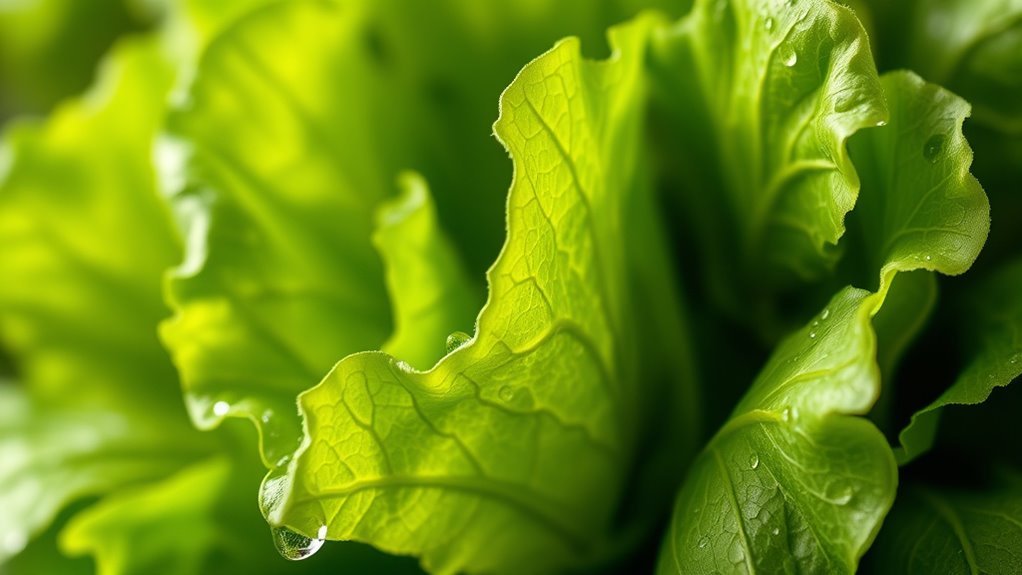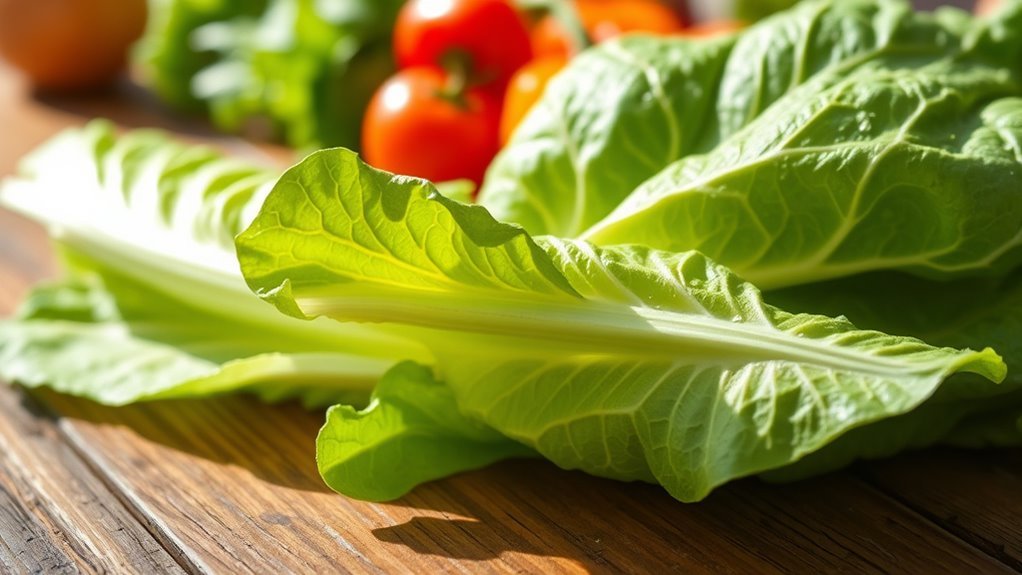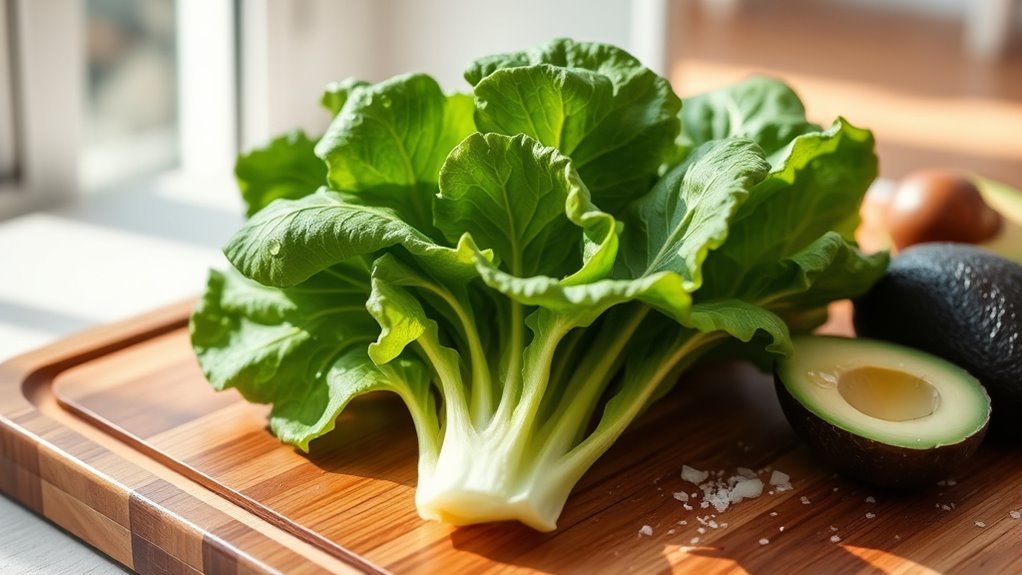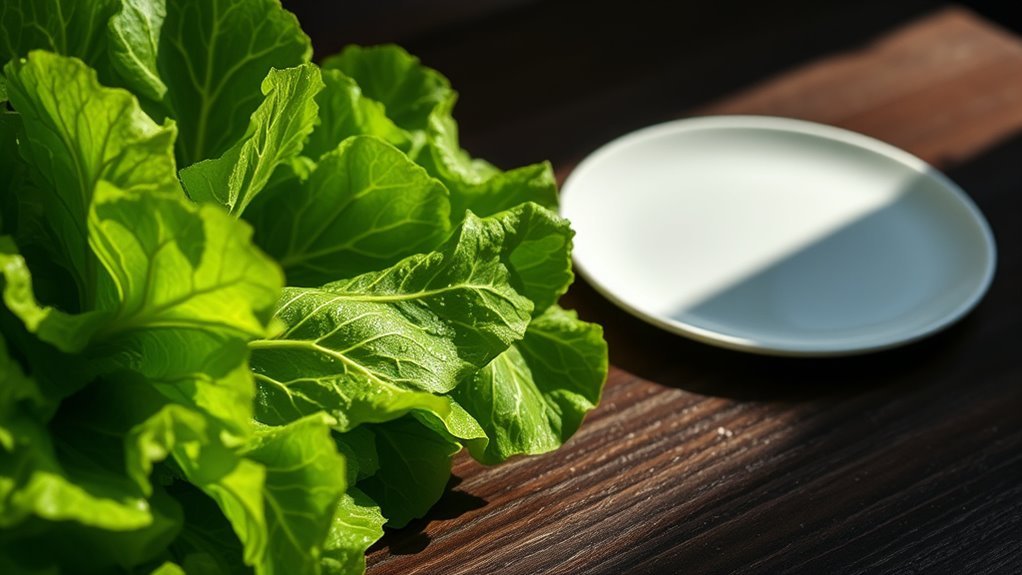Yes, lettuce is keto-friendly! With low carb content—about 2-3 grams per 100 grams depending on the variety—it’s a great addition to your meals. Lettuce is nutrient-dense, rich in vitamins A, K, and C, and can help maintain hydration due to its high water content. Plus, its versatility allows for creative uses in wraps, salads, and even tacos. If you want to explore more about the benefits and ways to enjoy lettuce in your keto plan, there’s plenty more to discover.
Nutritional Profile of Lettuce

When it comes to understanding the nutritional profile of lettuce, you’ll find it’s a low-calorie vegetable packed with essential nutrients. Different lettuce varieties, like romaine and butterhead, offer unique benefits, but they all share a low calorie count, making them a great choice for those seeking freedom in their diets. The fiber content in lettuce is remarkable, with about 1 gram per cup, which aids digestion and promotes satiety. This fiber also supports gut health, making lettuce a smart addition to meals. Additionally, lettuce is rich in vitamins A, K, and C, along with minerals like potassium and folate. Incorporating various lettuce types into your diet can enhance both nutritional intake and meal variety, all while keeping calories in check.
Carb Content in Different Types of Lettuce

While you might think all lettuce is created equal, the carb content can vary greatly among different types. For instance, iceberg lettuce contains about 2 grams of carbs per 100 grams, making it a lighter option for those on a keto diet. In contrast, romaine lettuce has a slightly higher carb content, with around 3 grams per 100 grams. However, romaine is often praised for its superior nutrient density, providing more vitamins and minerals compared to iceberg. This difference is vital when you’re aiming for a low-carb lifestyle while maintaining essential nutrition. So, when choosing your lettuce, consider both the carb content and the nutrient density to guarantee you’re aligning with your dietary goals.
Health Benefits of Incorporating Lettuce Into a Keto Diet

Incorporating lettuce into your keto diet offers several health benefits that can enhance your overall nutritional intake. Lettuce is low in carbs and calories, making it a perfect fit for keto essentials. It’s high in vitamins A and K, promoting eye health and bone strength. Additionally, its high water content can improve hydration, which is vital on a ketogenic diet.
Here’s a quick overview of some key health benefits:
| Benefit | Description | Keto Essentials |
|---|---|---|
| Low-Calorie | Helps maintain calorie deficit | Supports weight loss |
| Nutrient-Dense | Rich in vitamins and minerals | Enhances nutrient intake |
| Hydration | High water content | Aids in hydration |
| Digestive Health | Contains fiber | Promotes gut health |
Creative Ways to Use Lettuce in Keto Meals
Lettuce can be a versatile ingredient in your keto meals, offering a fresh crunch that enhances both flavor and texture. Here are some creative ways to integrate lettuce into your dishes:
- Lettuce wraps: Use large leaves to wrap your favorite proteins, like grilled chicken or shrimp, creating a low-carb alternative to traditional sandwiches.
- Salad variations: Experiment with different dressings, nuts, and cheeses to keep your salads exciting and satisfying.
- Lettuce smoothies: Blend fresh lettuce with avocado, spinach, and your choice of low-carb fruits for a nutrient-packed drink.
- Lettuce tacos: Substitute taco shells with lettuce leaves for a fun, crunchy way to enjoy your favorite fillings, like seasoned beef or veggies.
These ideas not only keep your meals interesting but also align perfectly with your keto lifestyle.
Tips for Choosing the Right Lettuce for Your Keto Plan
When you’re crafting delicious keto meals with lettuce, selecting the right type can make a significant difference in both taste and nutritional value. Opt for lettuce varieties like romaine and spinach, which are low in carbs and high in vitamins. Iceberg, while crunchy, offers fewer nutrients compared to darker greens. Consider your salad dressings, too; creamy dressings can enhance flavor but may add hidden carbs, so choose wisely. Look for dressings made with olive oil or avocado to keep it keto-friendly. Additionally, fresh lettuce should be crisp and vibrant, avoiding wilted or discolored leaves. By selecting the right lettuce and accompanying dressings, you’ll not only elevate your meals but also stay aligned with your keto lifestyle.


